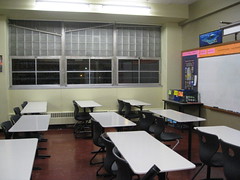 Like a pendulum on a grandfather clock, ideas about the best way to educate children who have special needs seem to swing back and forth. Do you know what to expect in the new school year?
Like a pendulum on a grandfather clock, ideas about the best way to educate children who have special needs seem to swing back and forth. Do you know what to expect in the new school year?
What is better for children who have special needs? Is it best to group these students into classrooms with other students who also have special needs, or is it better to place these kids into “mainstream” classrooms? Historically speaking, the trends in Special Education shift between these two ideas, over and over again.
Right now, many schools across the country are mostly focused on educating students who have special needs in classrooms set aside from the ones that the “typical” student population will attend. There are some advantages to using this solution.
These classrooms are required, legally, to be taught by a teacher who has gone through the proper training and education in order to become a teacher of Special Education. This teacher is likely to have a better understanding of what an IEP is, and the types of behaviors that one can generally expect from students who have certain special needs.
These classrooms often have much fewer students in them than the mainstream classrooms would have, so each student can get more “one-on-one” time with the teacher, and can have his or her work adapted to match his level, skill, need, or IEP. Usually, these classrooms also have plenty of teacher’s aids, (or paraeducators), who are there to assist both the teacher and the students.
The disadvantages to these types of classrooms are that these students can remain “isolated” from their “mainstream” peers. They may not get good examples of proper social skills, that is in context with typical students. It is possible that students who attend these classrooms will have a stigma placed upon them by other students.
School boards may find this type of classroom to be cost prohibitive, because they would need to constantly staff a certain amount of specialized teachers and paraprofessionals, depending on the amount of students who were part of the program. Sadly, we are at a time when budget cuts are hitting the special education staff, in addition to the “mainstream” staff.
The other option is to bring special education students into “mainstream” classrooms. This is what you can expect to happen in your child’s school next year. Many states are requiring students who have special needs to spend 80% of their school day in “mainstream” classrooms. The advantage of doing this is so the student will get the proper interaction with his or her peer group, and develop social skills in a more natural setting. It won’t require schools to hire as many Special Education teachers, or teacher’s aides, either, which will save some money.
The disadvantage is that students who have special needs may face more bullying in “mainstream” classrooms than they would in a separate Special Education classroom. The class size will be much larger, leaving little time for the student to communicate with the teacher. The teacher might not have a good understanding about certain kinds of special needs, how to properly adapt work, or what an IEP is.
Image by supafly on Flickr

